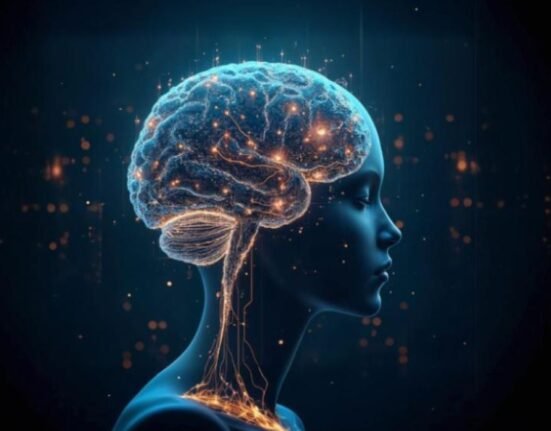Our understanding of who we are, comprising all our ideas and emotions regarding our physical, psychological, and social selves, is known as our self-concept. Self-concept also encompasses our perception of our unique qualities, capacities, and behaviours. Early infancy and adolescence are when our self-concept grows the fastest, yet it is a dynamic idea that evolves as we gain more self-awareness. A person’s overall belief about their identity, including their physical, emotional, social, spiritual, and other characteristics, is known as their self-concept ( Neill, 2005).
Our perception of ourselves is known as our self-concept. Examples of self-concept are as follows :
- Your perception of your personality qualities, similar to your introversion or extrovertism
- Your perception of your life’s positions, including whether you consider your positions as a partner, parent, sibling, friend, or other significant aspects of your identity.
- The interests or passions that are central to your identity, like following a particular political party or being a sports enthusiast.
Rogers’ Three Parts of Self-Concept
According to humanist psychologist Carl Rogers, a person’s self-concept is composed of three factors
1. Ideal self
The person you aspire to be is your ideal self. This individual possesses the traits or qualities you’re seeking to acquire or ask for. It’s the person you picture yourself as being if everything you wanted was true. One’s ideal self and their self-image are constantly not the same. An image of the person we aspire to be is our ideal self. Perhaps you have an image of a cool, self-assured person in mind.
Your ideal self could enter a room and strike up a conversation with any random person there. A person often has poor self-esteem when their ideal self and their current self are not compatible. They perceive themselves as less than the person they wish to be (or could be) in real life. According to Rogers, self-actualization is possible when one’s ideal self and self-image coincide. One can live the life one desires and accomplish all of their goals through self-actualization.
Read More: Ideal self vs Real self
2. Self-image
Your current perception of yourself is known as your self-image. Your self-image is affected by a variety of factors, including social positions, personality traits, and physical attributes. Our sense of self-worth is our self-image. Self-image encompasses our perception of our physical characteristics (brown hair, blue eyes, tall elevation), our social liabilities (woman, family, gardener, etc.), and our personality (gregarious, serious, loving, etc.).
Read More: The Psychology of Self-Perception
The self doesn’t always reflect reality. Some people have an exaggerated impression of one or further of their traits. An individual may have more positive views of some elements of themselves and further negative views of others as a result of these exaggerated perceptions, which can be either good or negative.
3. Self-esteem
The value we assign to ourselves is known as self-esteem. The way we assess ourselves determines our levels of self-esteem. These assessments take into account both how we compare to other people and how other people respond to us. Our self-esteem rises when we differ from others and discover that we’re superior to them in that area and/ or that others like what we do. However, our self-esteem suffers when we judge ourselves against others and discover that we aren’t as successful in a certain try and/ or when others don’t think well of us. In certain disciplines, similar to “ I’m a good student, ” we can have high self-esteem, but in other disciplines, similar to “ I’m not well-liked, ” we can have low self-esteem.
Read More: Why is our Society Obsessed with Success?
Incongruence and Congruence
Reality and one’s self-concept don’t always match. Your self-concept is said to be congruent when it’s aligned. Your self-concept is inconsistent if there’s an inconsistency between your perception of yourself (your self-image) and your ideal self (your desired self). One’s self-esteem may suffer as a result of this inconsistency.
According to Rogers, incongruence originates in early life. Children start to rewrite their memories of events in a way that makes them feel undeserving of their parents’ love when parents put conditions on their affection for them — expressing love only after children “earn it” through certain actions and meeting expectations. Again, unity is aided by unconditional affection. When a child feels this kind of love, which is also known as family affection, they don’t feel the need to keep making up stories about themselves to move themselves so that other people will accept and adore them for who they are.
Read More: Shadow Unveiled: Embracing the Hidden Aspects of Self
Self-Concept Theory
The following points are generally agreed upon by proponents
- It’s acquired, not built-in;
- It develops during childhood and early adulthood, when it’s more easily modified or updated; It’s changeable Later on, however, it becomes further a difficult task because people have already formed opinions about themselves;
- Reality and self-concept don’t always coincide. Our perception of ourselves is “ congruent ” when it does.
Read More; Human Psychology Theories on Personality Development
- Social interaction plays a significant part in addition to natural and environmental influences;
- In its broadest sense, self-concept refers to our total perception of ourselves, which encompasses both emotional and cognitive self-judgments;
- Self-concept is multidimensional, encompassing our perceptions of ourselves in terms of multiple dimensions(e.g., social, religious, spiritual, physical, emotional);
Read More: The Meaning of Self-Image for Girls
The Self-Concept Theory’s Factors and Elements
There are differing opinions regarding the factors and description of self-concept, but a basic, widely accepted conceptualization of self-concept has certain traits and dimensions.
1. Characteristics of Self-concept
To refresh your memory, our perception of ourselves is known as our self-concept. Everybody has an individual self-concept that is distinct from other people’s self-concepts and from how they perceive us. Still, there are certain traits that our collective self-concepts all share Self-perception:
- Shows differently with every individual.
- Vary from highly favourable to highly unfavourable.
- Has functional, intellectual, and emotional aspects.
- Adapts to the situation.
- Modifies with time.
- Have an impact on the person’s life
2. Dimensions of Self-Concept
Different factors can make up distinct types of self-concept; for instance, there won’t be as much overlap between the factors that make up “social self-efficacy” and “academic self-efficacy.”
Regarding the self-concept dilemma, academics are aware of a few broad dimensions.
Among these dimensions are:
- Self-worth
- Self-esteem
- Physical self-image
- Ideal self
- Social identities or roles
- Individual characteristics and traits
Development of Self-Concept
The formation of a self-concept starts in early life. The lifespan is not spared from this procedure. However, the most significant development of one’s self-concept occurs between early childhood and adolescence.
Children start to set themselves apart from others by the age of two. By the time they are three or four years old, kids know that they are distinct individuals. A child’s self-image at this age is mainly descriptive, predicated on certain physical traits or details. Nonetheless, kids become more aware of their talents, and by the time they are six years old, they can express what they need and want. Additionally, they are beginning to define themselves in terms of socioeconomic classes.
Read More: How to be kind to yourself?
Children start thinking about how other people see them and comparing themselves to them in social situations between the ages of 7 and 11. Children’s self-descriptions are increasingly abstract at this point. They start to talk about their skills rather than just certain traits, and they understand that their traits are a variety. At this age, a youngster might start to perceive himself, for instance, not so much as athletic or not athletic, but more athletic than some and less athletic than others. The ideal self and self-image begin to take shape at this point.
Take Away
The definition of self-concept is a construct that mediates conflicts and interactions between the self-image (personal perception of the self and mental representations of the self) and the ideal self (what we wish we were actually like). A person’s sense of self-worth or self-esteem is affected when their ideal self and their self-image are not in alignment or mismatched.
Humanistic psychologists look at how one’s self-concept affects their life, including dysfunctions like anxiety and other problems with self-esteem that arise when one’s self-concept is challenged. The desire to be the best version of ourselves during our lifetime, or self-actualization, is the ultimate objective for each human. Maslow proposed the Hierarchy of requirements, a diagram that illustrates the sequence of requirements that people must fulfil to become fully realized.
References +
- Ackerman, C. E., MA. (2023, April 26). What is Self-Concept Theory? A Psychologist Explains. PositivePsychology.com. https://positivepsychology.com/self-concept/#:~:text=Self%2Dconcept%20is%20the%20perception,skills%2C%20and%20areas%20of%20weakness
- MSEd, K. C. (2022b, November 7). What is Self-Concept? Verywell Mind. https://www.verywellmind.com/what-is-self-concept-2795865
- https://study.com/academy/lesson/what-is-self-concept-in-psychology-definition-lesson-quiz.html
- Vinney, C. (2018, November 12). What is Self-Concept in psychology? ThoughtCo. https://www.thoughtco.com/self-concept-psychology-4176368













Leave feedback about this